From amaranth to quinoa and all the players in between, welcome to our guide to whole grains.
We all know it's good to get our whole grains in, and there's a whole world of 'em outside of brown rice and oats. It can be intimidating to introduce something entirely new into your diet, but never fear - most of these grains have been staples in the human diet for thousands of years, and we've got the guide on what's what!Seeking out diversity in your whole grains reaps many benefits: more diverse nutrients, different flavors and textures in your food, you'll become an even savvier cook, and hey - you get props for trying something new. So, let's dive right in to different whole grains you might find at the store - what they look like, how to cook them, and whatever the deal is with gluten. But first thing's first...
Why are whole grains better? And... what even makes something whole grain?
Great questions! A whole grain means the grain contains all of the naturally-occurring nutrients of the entire grain seed. A whole grain has three parts: the nutrient-packed germ, which contains vitamins and healthy fats - the endosperm, which is the starchy middle layer that makes up most of the grain - and lastly, the outer layer called the germ, which contains most of the fiber and even more minerals and vitamins. For reference, refined white rice will likely contain just the endosperm. A whole-grain is "better" than a refined grain because it has more nutrients, fiber and protein.Of course, this doesn't make white rice automatically bad - just different! For culinary purposes, white rice has an entirely different texture than brown rice, for example - and they all have their uses. For the sake of nutrient-density, however, a whole grain is the clear winner.
The Guide To Whole Grains
Quinoa
Love it or hate it (and for the record, we love it), we all know quinoa: it graced every "superfoods" list on the Internet for years. It has more essential amino acids than most other whole grains, which is how it earned its superfood status - and, we just love the nutty, earthy flavor. Funny enough? Quinoa is technically a seed - not even a grain. It's a bit of an imposter, but we'll take it.How to cook it: Use a ratio of 1 1/4 cups quinoa to 2 cups liquid. Most people prefer to use broth in place of water for the added flavor and to mask any natural bitterness from the quinoa. Boil your broth, bring to a simmer, then mix in your quinoa. Simmer until the broth is absorbed and the quinoa is tender, about 15 minutes. Turn off the heat and let the quinoa stand, covered, for 5 to 10 minutes. Transfer to a large bowl, let cool, and then fluff with a fork.
How to store it: Dry quinoa in an unopened pack is good for years. Cooked quinoa will last for up to 5 days in the refrigerator, and 3 months in the freezer.
Gluten-Free: Yep!
Recipes, please. We've got lots. Slow-Cooker Quinoa Minestrone (a team favorite), this salad with eggplant and apples, gluten-free pancakes, and for something really fun - Quinoa chocolate chip cookies!
Millet
This teeny little grain might look similar to quinoa - and, like quinoa, Millet is technically a seed! We love millet for its slightly sweet flavor, and for its economical price point.How to cook it: Bring 1 cup millet and 2 cups water to a boil in a saucepan. Once boiling, reduce heat to a low simmer and cover to cook for 20 minutes. Remove from heat but leave covered to steam for 10 more minutes. Fluff with a fork and enjoy!
How to store it: Raw millet is best stored in the fridge, where it can last up to 4 months, or the freezer, where it will stay good for 6 months. Cooked millet will stay good in the fridge for about 3-5 days, and 3 months in the freezer.
Gluten-Free: Yes! Millet is naturally gluten-free.
Recipes, please. Check out Giada's newest cookbook, Eat Better Feel Better, for a fabulous Millet Tabbouleh reicpe! We also love puffed millet to top off smoothie bowls or to eat as cereal.
Brown Rice
Brown rice is the posterchild of a quintessential healthy whole-grain. We all know it, and we all choose it at restaurants in place of white rice when we're feeling a little health-minded that day! It's a great healthy staple, it's affordable, and it's easy to find.How to cook it: Because of the extra germ layer, brown rice takes longer to cook than white rice. Use a ratio of 1 cup rice to 2 cups water. Bring to a boil in a pot, reduce to a low simmer, and cover for 40-45 minutes.
How to store it: Dry brown rice in a sealed container will remain good for years. Cooked brown rice will last for up to 5 days in the refrigerator, and 3 months in the freezer.
Gluten-Free: Yes!
Recipes, please. You got it. Try Giada's Dijon Maple Brown Rice Salad, or her go-to Brown Rice Breakfast Bowl.
Oats
Another familiar face - oats! While oats are generally considered a whole-grain, Oat Groats are the most intact and whole-grain form of them. However, since groats take so long to cook, most people prefer their oats in a different form: rolled, steel-cut, or crushed, to name a few.How to cook it: This depends on the form of the oats. Refer to the package instructions on your specific oats - the cooking times vary greatly!
How to store it: Sealed and in a cool place, dry oats can last for about 1-2 years. Cooked oats will stay good in the fridge for about 3-5 days, and 3 months in the freezer.
Gluten-Free: Technically yes, but many oats get cross-contaminated with wheat at some point in their life. If you have a severe gluten sensitivity, opt for specifically "gluten free" oats.
Recipes, please. On it. Oatmeal with olive oil and oranges, overnight oats, chocolate chunk oatmeal cookies, and no-bake chocolate almond butter cookies, to name a few.
Farro
Farro is an ancient Italian grain - and like oats, it comes in a variety of preparations. Pearled farro is the most commonly sold type in the US, which has the outer bran and husk layer removed - so, not technically a whole grain. Whole-grain or whole-berry farro is the complete grain, but it requires extra cooking time. Semi-pearled farro, however, is right in between the two, with no husk and some of the bran intact.Farro is a delightfully chewy, nutty grain - we love it in everything from salads to risotto.
How to cook it: The method in this recipe is Giada's favorite way to cook it up. For semi-pearled farro or whole-grain farro, simply add more cooking time, and more liquid if necessary.
How to store it: Sealed and in a cool place, it can stay good for about 1-2 years. Cooked farro will stay good in the fridge for about 3-5 days, and 3 months in the freezer. (sensing a pattern?)
Gluten-Free: No - farro is a type of wheat, and does in fact contain gluten.
Recipes, please. For something light, give this farro salad with cherries or farro and arugula salad a try. Giada's farro salad with mushrooms and gorgonzola is excellent to make ahead for picnics and lunches. Cook it like risotto in this "farrotto" recipe!
Barley
This delicious, nutty grain is very similar to another favorite: farro! As a matter of fact, you can generally use the two grains interchangeably in recipes. Additionally, like farro, "pearled" barley is the most common variety in the US, which isn't technically a whole grain. However, it still boasts a load of nutritional benefits, and has a delightfully toothsome texture.How to cook it: Use Giada's method for cooking farro in this recipe for a delicious way to cook barley. Additionally, you can use it as a hearty grain for soups - give it about 30-35 minutes to simmer in a brothy soup until tender.
How to store it: Sealed and in a cool place, it can stay good for about 1-2 years. Cooked farro will stay good in the fridge for about 3-5 days, and 3 months in the freezer.
Gluten-Free: No - barley does contain gluten.
Recipes, please!! Use barley in any place you'd use farro! It also makes a great addition to Giada's Tuscan Barley Soup.
Amaranth
Yet another seed secretly moonlighting as a grain, Amaranth is often referred to as a "psuedocereal"! Amaranth is very similar to quinoa in flavor and texture, but it's a much smaller grain. Due to its small size, it's often eaten as a porridge or hot cereal - it's also delicious puffed or added into baked goods.How to cook it: To cook it like a porridge or hot cereal, bring 2 1/2 cups water and 1 cup of aramanth to a boil. Reduce heat to a simmer and stir occasionally until tender.
How to store it: Uncooked amaranth will keep for 4 months in the pantry - be sure to keep it in a cool, dark place away from sunlight. In the freezer, raw amaranth will stay good for 8 months to a year.
Gluten-Free: Yes, it is gluten-free! However, as it could potentially be processed in contact with gluten products, be sure to look out for "gluten free" on the label if you are highly sensitive.






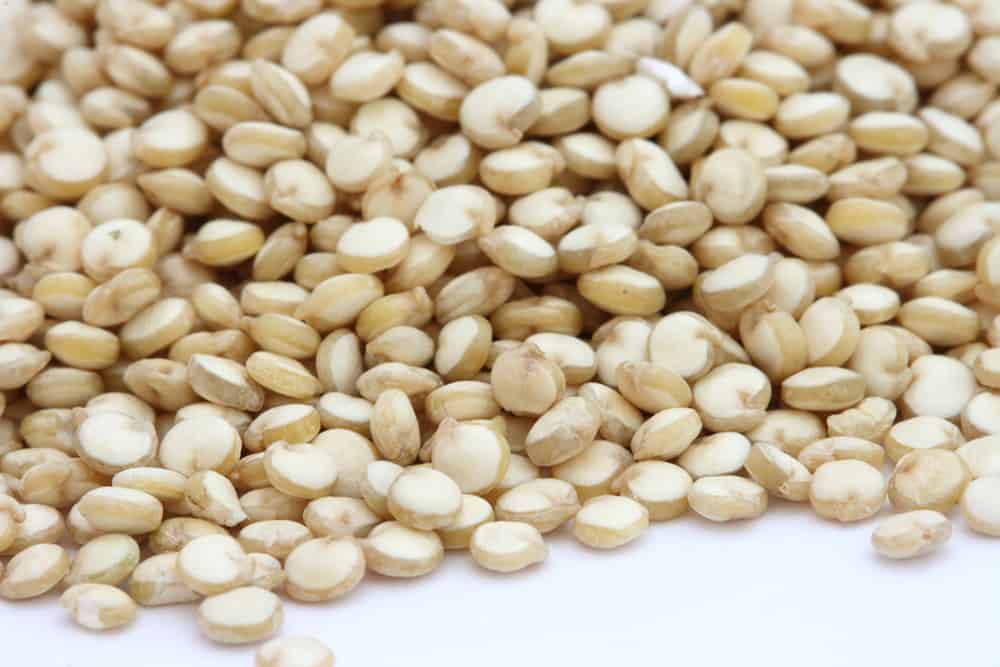
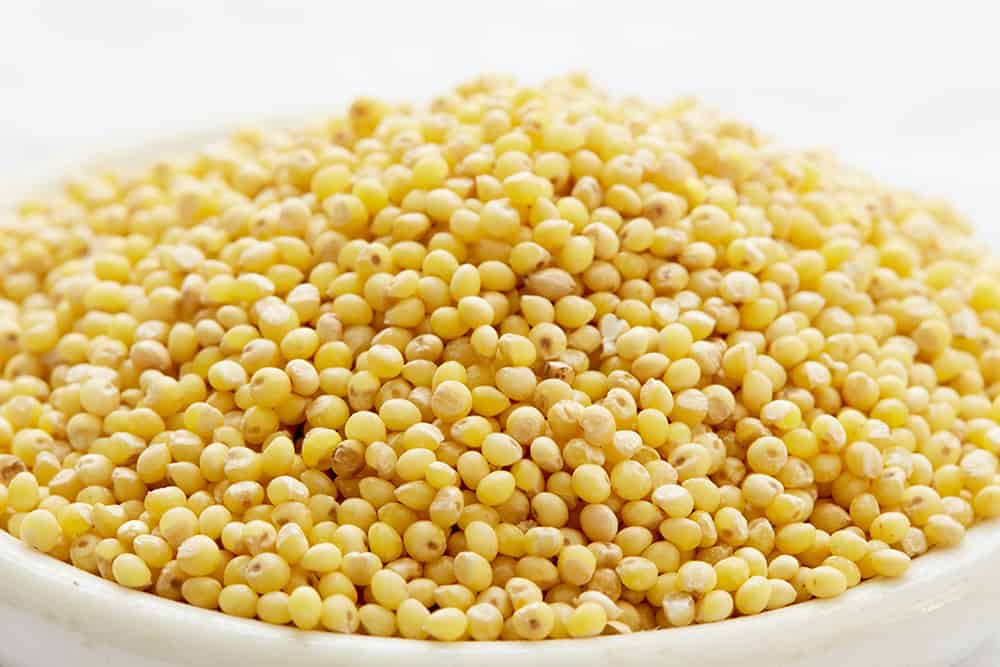
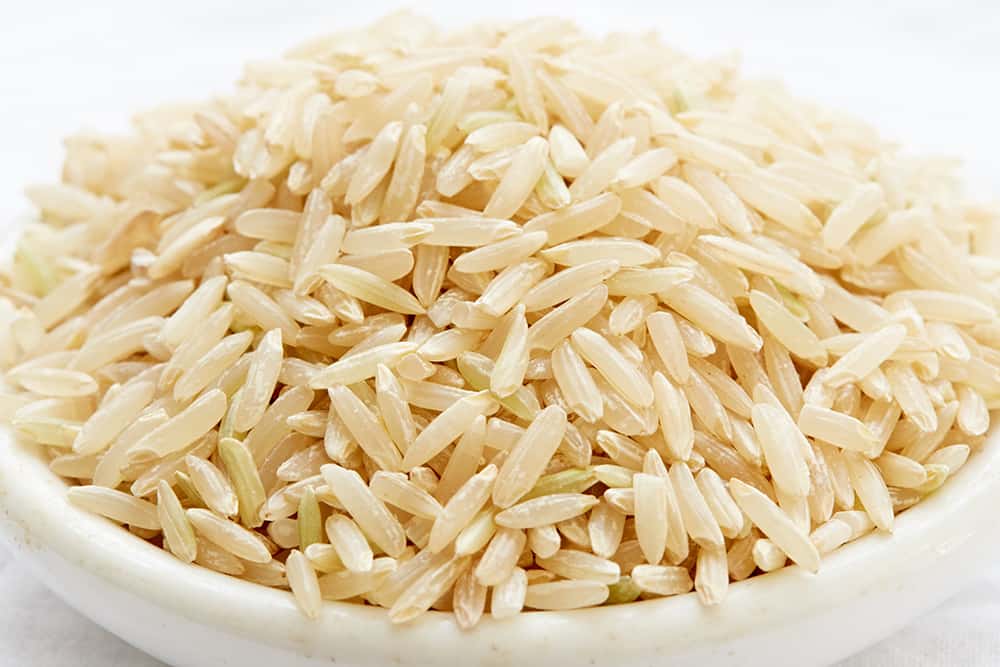
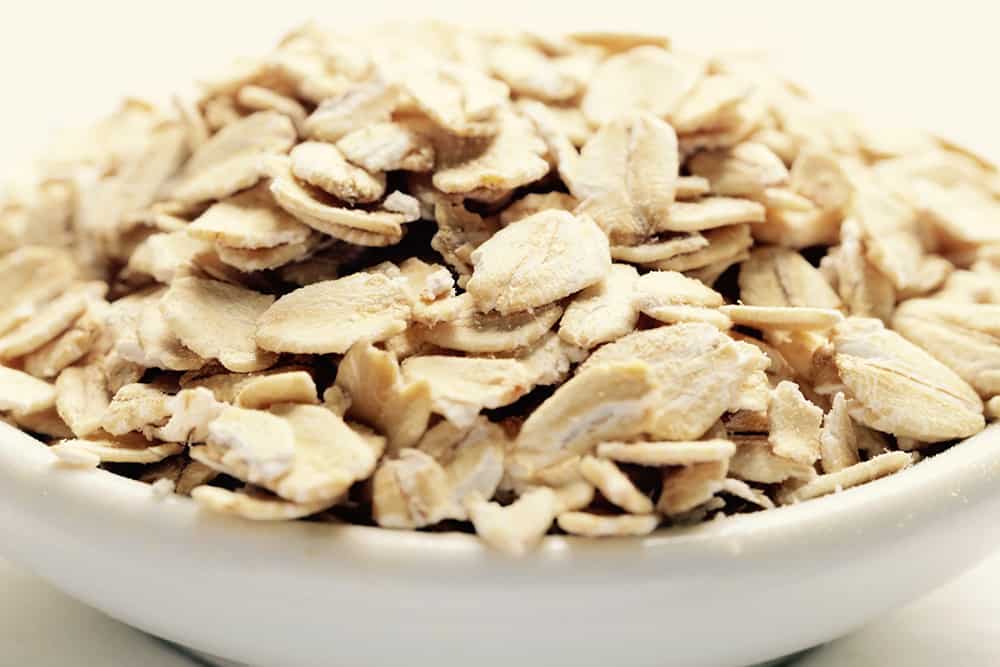
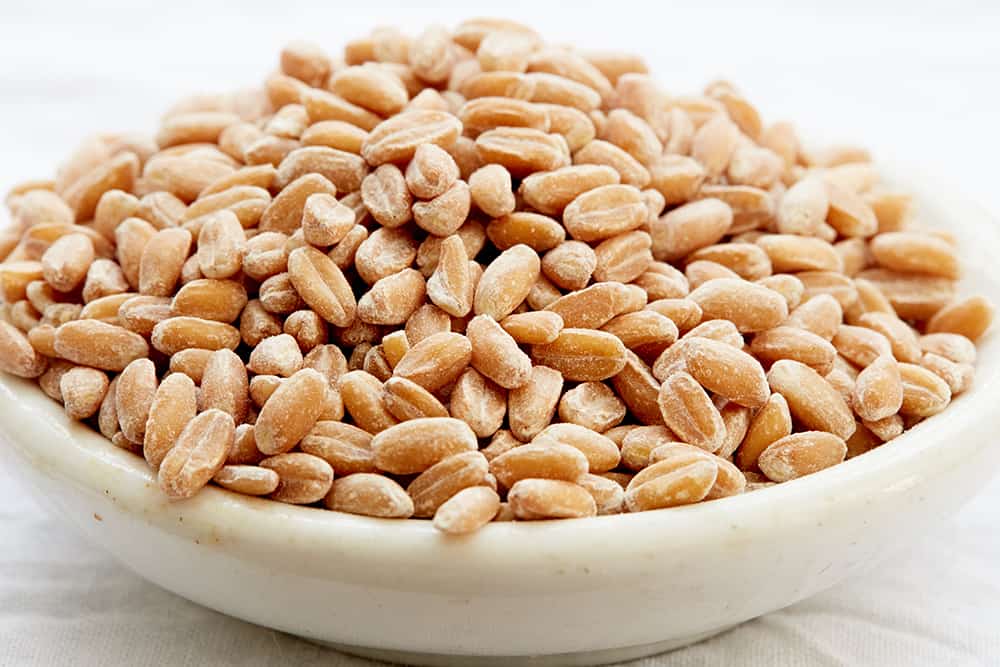
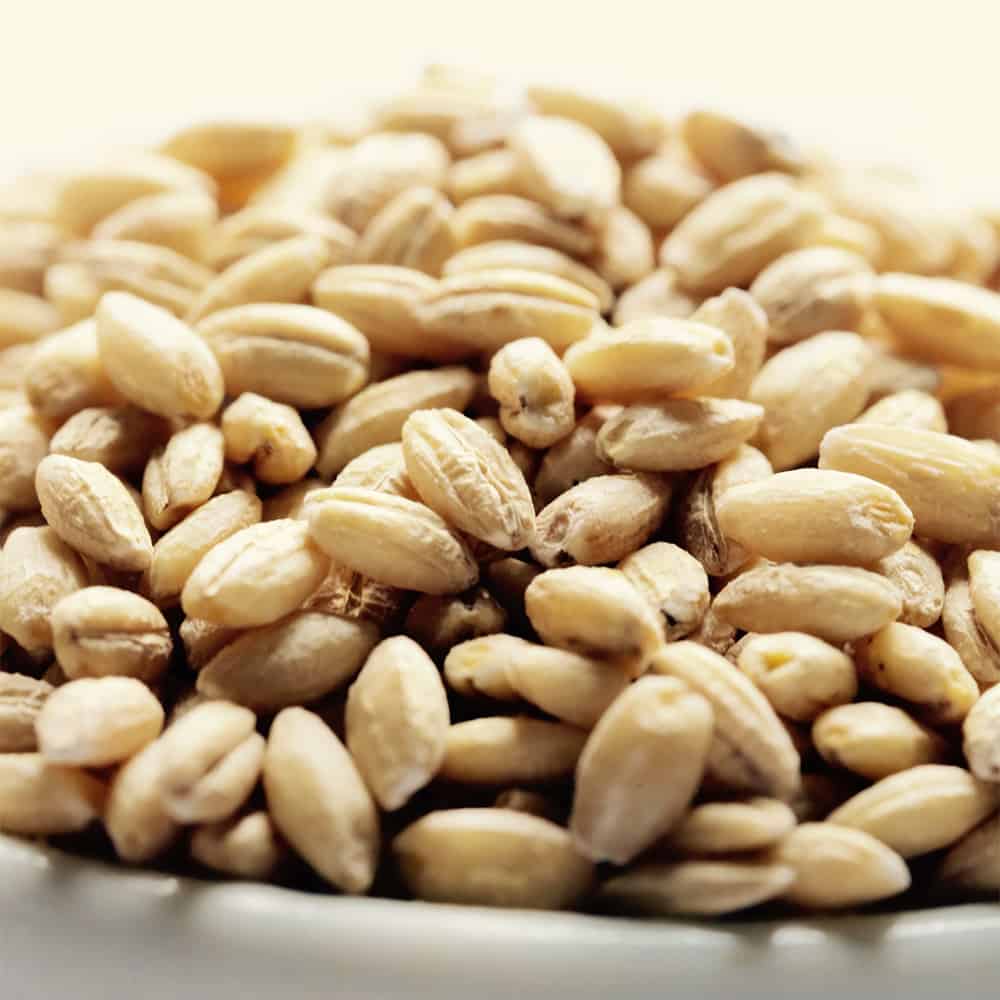
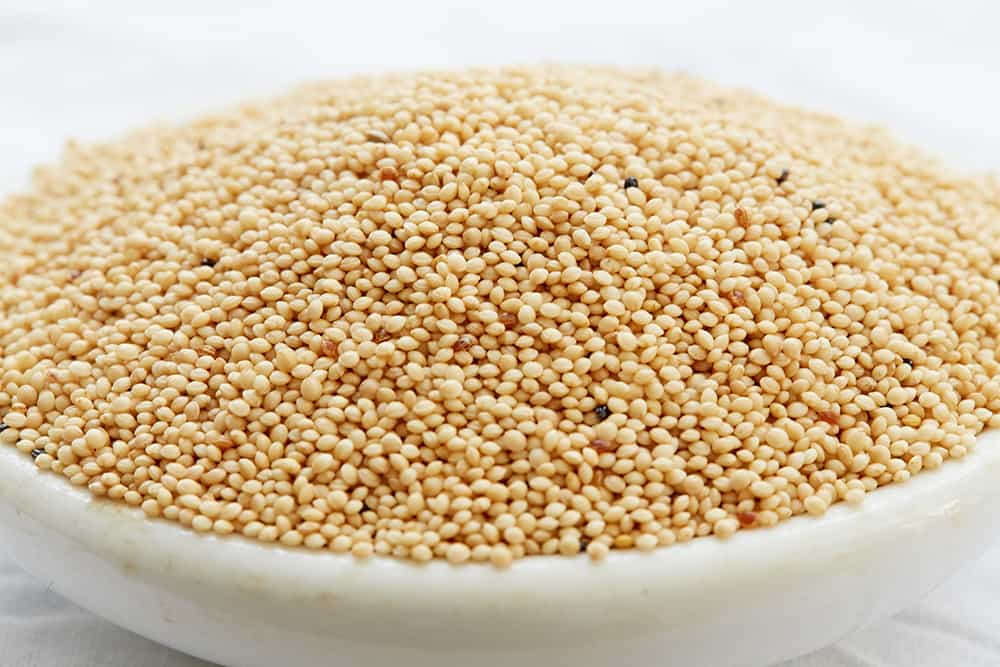










0 comments